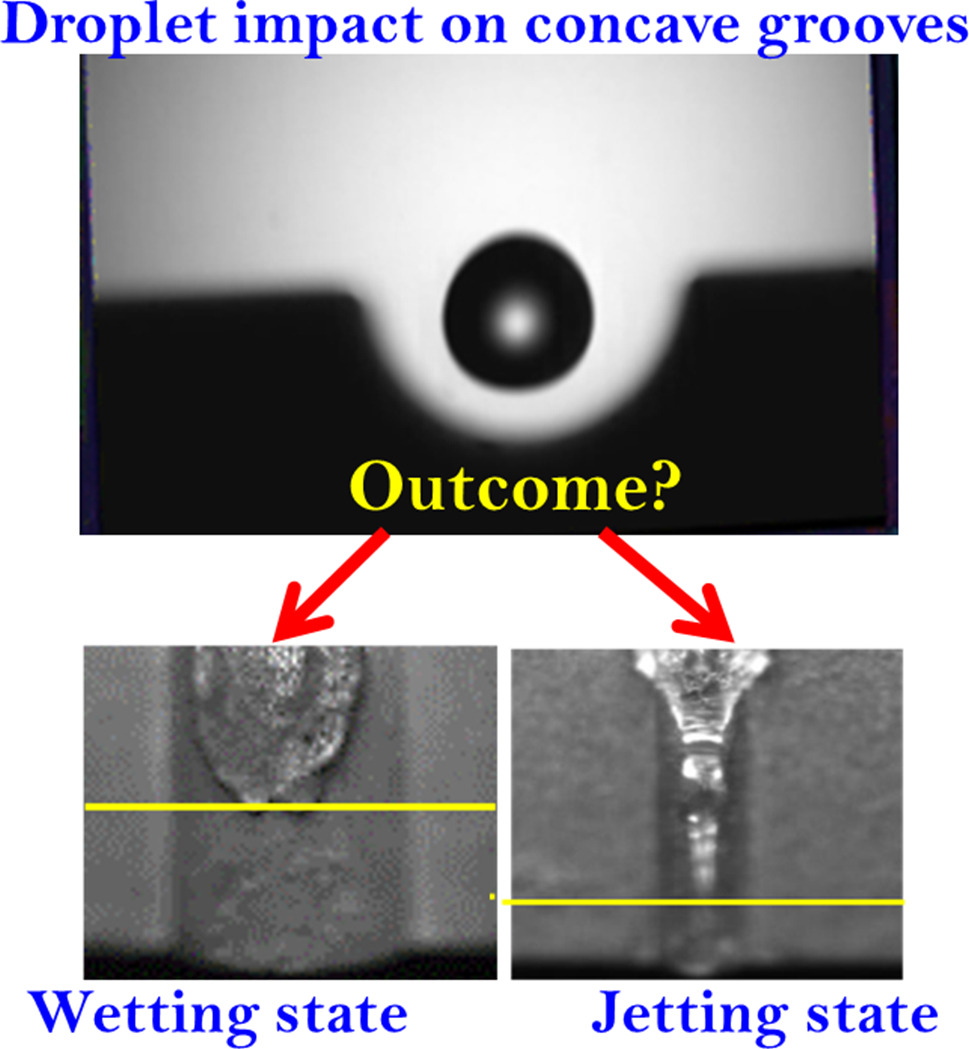https://doi.org/10.1140/epje/s10189-023-00349-9
Regular Article – Flowing Matter
Jet or wet? Droplet post-impact regimes on concave contours
1
Hydrodynamics and Thermal Multiphysics Lab (HTML), Department of Mechanical Engineering, Indian Institute of Technology Kharagpur, 721302, Kharagpur, West Bengal, India
2
Department of Mechanical Engineering, Indian Institute of Technology Ropar, 140001, Rupnagar, Punjab, India
d purbarun@mech.iitkgp.ac.in, purbarun.iit@gmail.com
Received:
10
January
2023
Accepted:
11
September
2023
Published online:
2
October
2023
Droplet collision and subsequent spreading or wetting interactions with the solid substrate exhibit rich and interesting physics and are also important for various utilities. The fluid dynamics becomes more interesting and insightful when the wettability and geometry of the surface are tuned and altered. This study investigates the post-impact regimes of droplet impact on hydrophilic and superhydrophobic concave profile grooves (having dimensions comparable to that of the droplet). The post-collision hydrodynamics for such substrate-droplet system is three-dimensional, as in addition to droplet dynamics in the azimuthal direction, liquid jets may also be generated in the axial direction of the groove. Thereby the system may either lead to wetting or jetting, depending on the impact conditions. The effect of the impact Weber number (We) on the jet velocity, non-dimensional spreading width (γ) and non-dimensional south-pole film thickness (h*) has been probed and quantified. The observations reveal that the role of the wettability of the substrate is more profound in the recoiling stage than in the spreading stage, because inertial forces dominate in the latter. It is also noted that the spreading width increases and south-pole height decreases with increasing the impact Weber number. The opposite trend is noted upon increasing the groove concavity by altering just one dimension of the groove. The jet velocity is found to be the highest immediately after the impact and eventually decreases in a nonlinear fashion. Further, it has been found that the jet velocity increases with increasing the impact Weber number and that this effect is more prominent for superhydrophobic surfaces. A semi-analytical framework has been proposed to predict the jet velocity evolution in terms of governing Weber (We) and capillary (Ca) numbers. The predictions of the proposed model are in good agreement with the experimental observations.
Copyright comment Springer Nature or its licensor (e.g. a society or other partner) holds exclusive rights to this article under a publishing agreement with the author(s) or other rightsholder(s); author self-archiving of the accepted manuscript version of this article is solely governed by the terms of such publishing agreement and applicable law.
© The Author(s), under exclusive licence to EDP Sciences, SIF and Springer-Verlag GmbH Germany, part of Springer Nature 2023. Springer Nature or its licensor (e.g. a society or other partner) holds exclusive rights to this article under a publishing agreement with the author(s) or other rightsholder(s); author self-archiving of the accepted manuscript version of this article is solely governed by the terms of such publishing agreement and applicable law.





